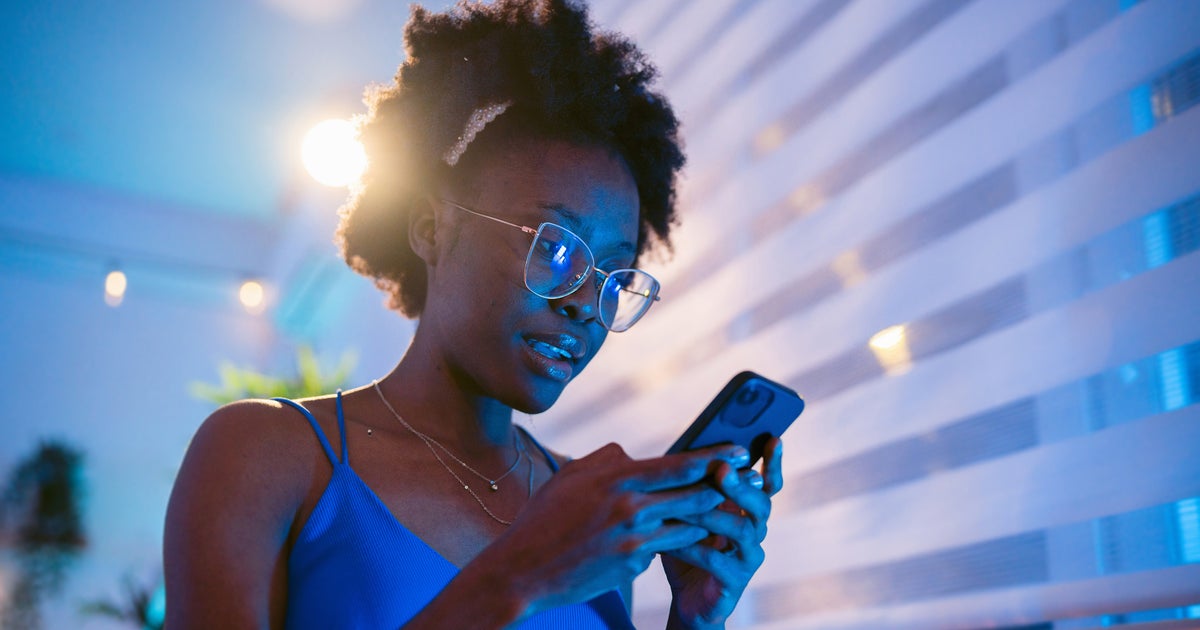
Our increased use of phones and other screen-based devices has caused concern about the harmful effects of “blue light” on our skin. Rumored to be as harmful as UVA or UVB lights, blue light has become aging’s new enemy, and over the past few years, skin care products have been developed to specifically protect against it.
But are these products really effective? Do they offer anything that normal sunscreen doesn’t already have? Or is it just another marketing term that aims to sell? HuffPost spoke with three board-certified dermatologists to find out.
What is blue light?
You’ve probably heard of UV rays that come from the sun and are characterized by specific wavelengths (between 280 and 400 nanometers). Blue light is also part of the electromagnetic spectrum, but compared to UV, it’s visible, with wavelengths between 450-495 nanometers.
“The sun is the main source of blue light, but digital screens such as TVs, laptops and mobile phones are additional sources, as well as LED and fluorescent lighting,” said board-certified cosmetic dermatologist Dr. Connie Yang.
How can blue light affect the skin?
The study of blue light and its effects on the skin are relatively new, but here’s what we know so far.
“Recent studies have shown that visible light (400-700nm) (in addition to UV rays) can cause hyperpigmentation,” said board-certified dermatologist Dr. David Kim.
“It’s also been shown that blue-violet light (415nm) is associated with more hyperpigmentation than red light (630nm). Another study showed that blue light induces redness and hyperpigmentation in Fitzpatrick skin type III and higher,” Kim added.
Kim also explained that blue light leads to increased melanin production, which can lead to hyperpigmentation.
Board-certified dermatologist Dr. Hamdan Abdullah Hamed says blue light can also lead to other types of premature aging. “Blue light generates reactive oxygen species (a kind of free radical) that causes oxidation and leads to premature aging, fine lines, wrinkles and uneven pigmentation,” he said.
“Blue light can also contribute to collagen and elastin degradation,” Yang added.
Blue light does, however, have some positive uses. Hamed said, “It’s used primarily to treat skin conditions such as acne, and pre-cancerous skin cells by causing oxidation and thus destroying these cells.”
As The Zoe Report notes, the blue light coming from your devices is indeed the same thing as the blue light that comes from LED skin care masks (it’s often used to fight acne). Yang added that in dermatology, blue light is also used to treat eczema and psoriasis.
Do we really need to protect our skin from our devices?
The answer is a bit complicated. Although the research done so far shows a need for blue light skin care in certain cases, it’s too soon to tell if it’s essential for all.
However, experts agree that it is essential for people who want to improve pigmentation (from sun damage or acne) or those who have melasma.
To note, people with medium to dark skin tones are more prone to hyperpigmentation and melasma.
“If you’re consistently in front of a blue screen, or artificial lights, then yes [you need anti-blue light skin care]. Ideally, I’d invest in some blue light glasses to protect the eyes against the damage first,” Hamed said.
“Observable effects vary depending on the age of the patient, skin elasticity, and other factors,” he added.
Does a basic skin care routine with SPF protect sufficiently against blue light?
Not entirely, the experts said. “UV filters provide protection primarily against UVA/UVB rays but not for visible light, and more and more studies are looking into the role of visible light in hyperpigmentation,” Kim said.
Sunscreen alone can’t protect the skin against blue light, confirmed Hamed.
Ingredients that protect against blue light
Marketing claims aside, if you decide to use products that protect against blue light, there are certain ingredients you should look for, per the experts.
-
Antioxidants: Look for vitamins C and E, green tea extract and lingonberry, all of which contain high levels of polyphenols (antioxidant plant compounds).
-
Niacinamide (vitamin B3): “It can help with blue light-induced oxidative stress and damage, especially when combined with polyphenols,” Kim said.
-
Licochalcone A: Kim said this is a component of licorice extract that has been shown to protect against blue light.
-
Iron oxides: Often used in mineral sunscreens to provide color, these have been shown to protect against the visible light spectrum, particularly when paired with zinc and titanium dioxide, explained both Kim and Yang.

